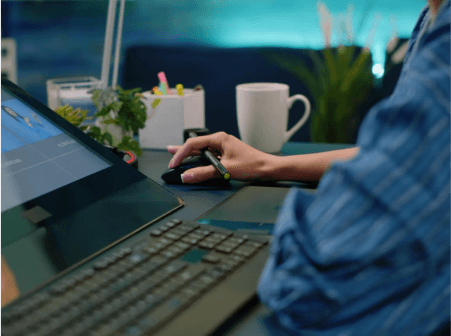Antonio Velkovski
Jan 4, 2025
Cold Email
Cold Email Outreach: Best Practices for 2025
Cold email outreach best practices for 2025 emphasize personalization, AI automation, and compliance to craft effective, engaging campaigns that build trust and convert.
Personalization in email outreach continues to be a crucial aspect of successful communication in 2025. Gone are the days of generic, one-size-fits-all email blasts. Instead, businesses are focusing on creating tailored messages that resonate with individual recipients.
By leveraging data and analytics, companies can gain insights into their audience's preferences, behaviors, and interests, allowing them to craft personalized emails that are more likely to capture attention and drive engagement. In practice, personalization can take many forms, from addressing recipients by their first name to tailoring content based on their past interactions with the brand. For example, an e-commerce company might send personalized product recommendations based on a customer's browsing history and purchase patterns.
Additionally, incorporating dynamic content such as personalized images or videos can further enhance the impact of email outreach. By making recipients feel seen and understood, personalized emails can foster a stronger connection and increase the likelihood of conversion.
Key Takeaways
Personalization is key in email outreach, make sure to connect with your audience on a personal level.
Timing is crucial, sending emails at the right moment can significantly impact your outreach success.
Craft compelling subject lines to grab the attention of your audience and increase open rates.
Leverage automation for efficient email outreach, but ensure it still feels personalized and genuine.
Building trust and credibility is essential in email outreach, focus on providing value and being transparent.
The Power of Timing: Sending Emails at the Right Moment
In the realm of email outreach, timing plays a pivotal role in determining the success of a campaign. In 2025, businesses are increasingly recognizing the significance of sending emails at the right moment to maximize open rates and engagement. Understanding the behavior patterns of their target audience is essential for identifying optimal send times.
For instance, B2B companies may find that sending emails during business hours on weekdays yields better results, while consumer-focused businesses might discover that evenings or weekends are more effective. Moreover, leveraging advanced analytics and AI-powered tools enables organizations to analyze recipient behavior and engagement patterns to determine the most opportune times for sending emails. By aligning email delivery with the recipient's active hours, businesses can increase the likelihood of their messages being seen and acted upon.
Furthermore, A/B testing different send times can provide valuable insights into when the audience is most receptive, allowing for continuous optimization of email outreach strategies.
Crafting Compelling Subject Lines for Email Outreach
Crafting compelling subject lines remains a critical component of effective email outreach in 2025. With inboxes inundated with a deluge of messages, a captivating subject line is often the first point of contact between the sender and the recipient. A well-crafted subject line should be concise, attention-grabbing, and relevant to the content of the email.
Incorporating personalization elements, such as the recipient's name or tailored offers, can significantly enhance the appeal of the subject line. Furthermore, leveraging psychological triggers and emotional appeal can pique the recipient's curiosity and prompt them to open the email. For instance, subject lines that evoke a sense of urgency or exclusivity can compel recipients to take immediate action.
Additionally, incorporating numbers, statistics, or intriguing questions can intrigue recipients and entice them to delve into the email content. In an era where attention spans are fleeting, mastering the art of crafting compelling subject lines is paramount for capturing the recipient's interest amidst a sea of competing messages.
Leveraging Automation for Efficient Email Outreach
In 2025, automation continues to revolutionize email outreach by streamlining processes, enhancing personalization, and improving efficiency. Automation tools enable businesses to schedule emails, segment their audience based on behavior or demographics, and trigger personalized responses based on recipient interactions. By harnessing automation, organizations can deliver timely and relevant content to their audience without manual intervention, thereby saving time and resources while maintaining a high level of personalization.
Moreover, advanced automation platforms leverage AI and machine learning algorithms to analyze recipient engagement data and optimize email delivery for maximum impact. For example, automated workflows can be designed to nurture leads through targeted email sequences based on their stage in the customer journey. Additionally, automation empowers businesses to conduct A/B testing at scale, allowing them to refine their email outreach strategies based on real-time performance data.
As technology continues to evolve, leveraging automation will be instrumental in driving efficiency and effectiveness in email outreach campaigns.
Building Trust and Credibility in Email Outreach
Establishing trust and credibility is paramount in email outreach endeavors in 2025. With growing concerns around data privacy and security, recipients are increasingly discerning about the emails they engage with. To build trust, businesses must prioritize transparency in their communication and adhere to best practices for data protection and consent management.
Clearly articulating the value proposition and relevance of the email content can instill confidence in recipients and mitigate skepticism. Furthermore, showcasing social proof, such as customer testimonials or industry accolades, can bolster credibility and reassure recipients of the sender's legitimacy. Authenticity and consistency in branding across email communications also contribute to building trust over time.
By delivering valuable and relevant content that aligns with recipients' expectations, businesses can cultivate a positive perception and foster long-term relationships with their audience. Ultimately, building trust and credibility is an ongoing endeavor that requires a commitment to ethical practices and delivering genuine value through email outreach.
Navigating Compliance and Privacy Regulations in Email Outreach
In an era marked by heightened awareness of data privacy and stringent regulations, navigating compliance is a critical consideration for email outreach in 2025. Businesses must adhere to regulations such as the General Data Protection Regulation (GDPR) and the California Consumer Privacy Act (CCPA) to ensure lawful and ethical handling of personal data in email communications. This entails obtaining explicit consent from recipients before sending commercial emails, providing clear opt-out mechanisms, and safeguarding sensitive information through robust security measures.
Moreover, staying abreast of evolving privacy laws and industry standards is imperative to mitigate legal risks and maintain trust with recipients. Collaborating with legal experts or compliance professionals can help businesses interpret complex regulations and implement compliant practices in their email outreach strategies. By prioritizing privacy and compliance, organizations not only mitigate potential liabilities but also demonstrate respect for recipients' rights and privacy preferences, fostering a positive brand image and trust among their audience.
Optimizing Email Outreach for 2025: Trends and Strategies
As email outreach continues to evolve, several trends and strategies are shaping the landscape in 2025. Interactive content such as quizzes, polls, or surveys within emails is gaining traction as a means to boost engagement and gather valuable insights from recipients. Additionally, incorporating user-generated content or interactive elements can foster a sense of co-creation and community involvement.
Furthermore, hyper-personalization powered by AI is enabling businesses to deliver highly tailored content at scale, catering to individual preferences and behaviors with precision. Leveraging dynamic content blocks allows for real-time customization of email content based on recipient attributes or interactions, enhancing relevance and impact. Moreover, integrating email outreach with omnichannel marketing efforts enables cohesive and synchronized communication across various touchpoints, fostering a seamless customer experience.
By aligning email outreach with other marketing channels such as social media or SMS, businesses can amplify their messaging and reinforce brand presence. In conclusion, optimizing email outreach for 2025 entails embracing personalization, leveraging automation intelligently, prioritizing compliance and privacy, and staying attuned to emerging trends to stay ahead in a dynamic digital landscape.
Follow us and don’t miss any chance!
Dive into our blog for expert insights, tips, and industry trends to elevate your project management journey.
Customized design
Ongoing support
Fast delivery
No spam, just genuine updates!











